Bali is an Indonesian island that is oftentimes spoken about for its beautiful beaches, delicious food, and beautiful sites.
This island is rich in spirit and culture, but most do not know about the incredible New Year’s celebrations.
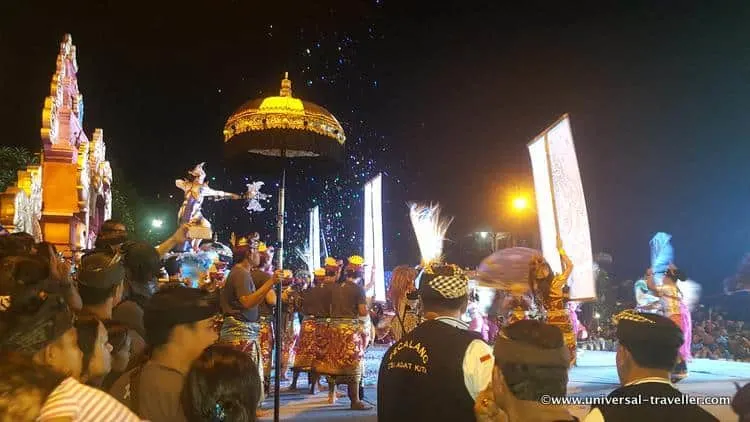
It is a top ten bucket list experience that spans multiple days, traditions, and experiences all over the island of Bali. Like other New Year’s celebrations, Bali does not disappoint in tradition or meaning.
The Balinese New Year is a six-day celebration in March, with Nyepi- the silent day being the third and most notable day.
Look:
This holiday falls on a different day each year and is calculated by the Balinese calendar.
On the Balinese calendar, one full year contains 12 sasih or Balinese months. Each month contains 35 days to match one complete cycle of the moon.
The holiday happens at different times during March, depending on the year. It is decided by the Balinese calendar and is marked by the first day of the spring Equinox.
In short, it is a six-day Hindu celebration that focuses on rest, relaxation, and the cleansing of the spirit.
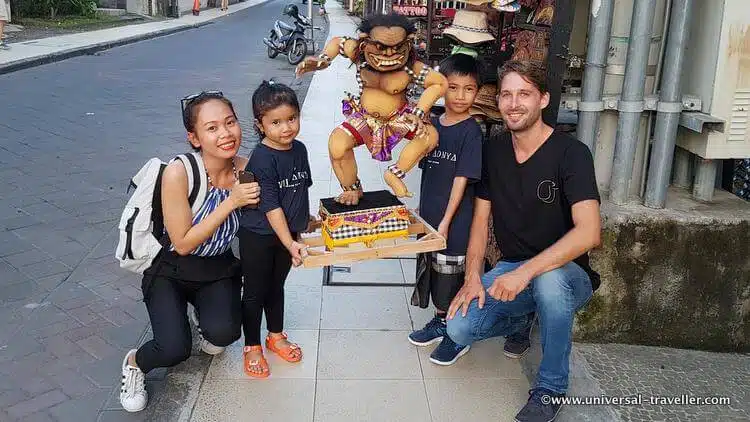
The Celebration
Day One: Melasti Ritual
On the first day, a purification ceremony called “Melasti” is held where the sacred water from the ocean is attained. The ceremonious blessing is performed in a Balinese temple near the ocean. The water is meant to cleanse sacred objects in several different temples.
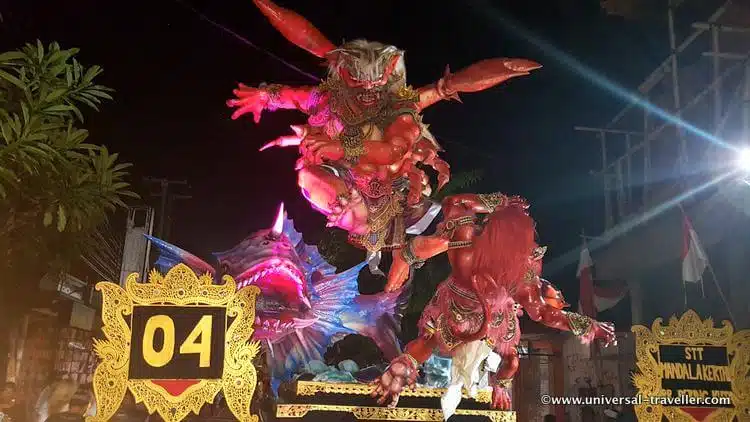
Day Two: Bhuta Yajna Ritual
Nyepi Eve is the second day of Nyepi and is traditionally called the Bhuta Yajna Ritual.
This is when the Ogoh Ogoh Parade occurs- variations of the event happen all over the island, but the best demonstrations are often in villages by the most popular beaches.
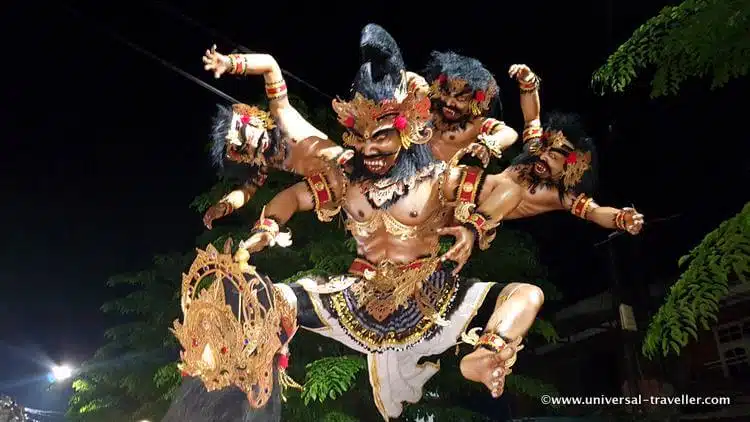
The parade’s purpose is to vanquish the negative elements and create a balance between man, God, and nature. Oftentimes on this day, sacrifices are made.
The sacrifices depend on the village. Some sacrifices include ducks, pigs, chickens, and even cows, as well as some plants.
In the evening, around 5-6 pm, the ceremonial event of Pengrupukan (ogoh ogoh parade) begins.
Related Posts
1. Did you know that Bali has 4 abandoned airplanes? Click here for photos and directions.
2. 13 Best Things To Do In Lombok
This parade takes a lot of time and preparation from the community.
About two months before Nyepi Eve, giant Balinese mythological demonic statues start being constructed. They have scary faces, extra arms, and legs and are usually created out of paper.
Next, they are attached to a bamboo platform carried throughout town toward the beach by hand.
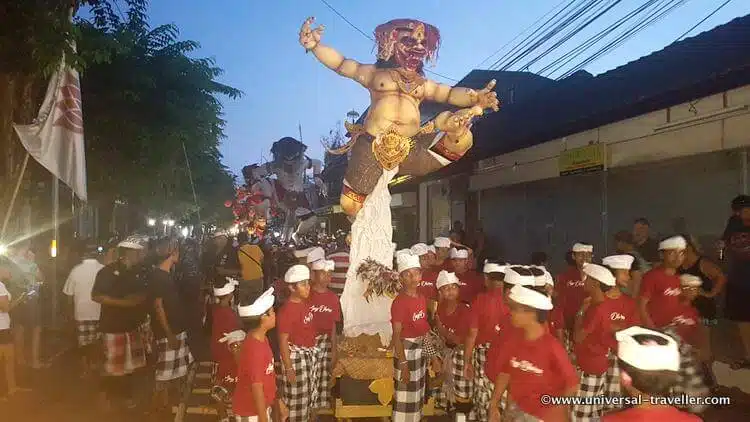
Statues are about 25 feet tall and can be extremely heavy. Sometimes the bamboo sticks are raised and down to give the illusion that the demons are running or moving.
Statues are colorful and detail-oriented, some looking like typical demons and others looking like crazed wild animals. These figures are meant to symbolize negative and harmful spirits.
Groups of men carrying the statues are joined by children following alongside as well as crowds of people marching and playing music, called Balinese gamelan musicians.
Sounds of honking horns, cheering, and other noises can be heard.
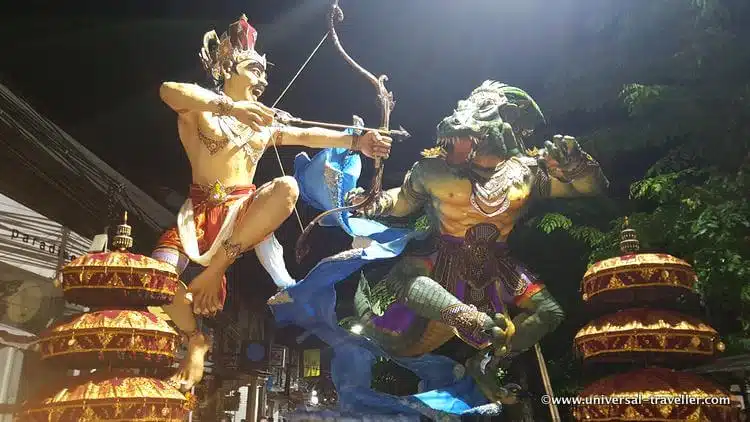
This commotion is to scare away evil spirits as the people continue their journey towards the ocean.
During this time, streets are lined with hundreds of people who are there to witness the spectacle. Tourists and locals alike gather to partake in photos, dancing, eating, and to help ward off the negative spirits from the island.
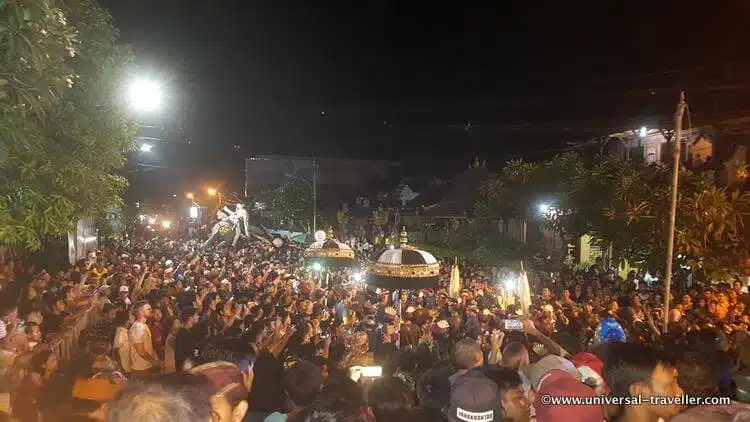
Once darkness falls, and the statues arrive at the beach, the massive figures are set ablaze and burned in a ceremony called Ngrupuk.
This ceremony symbolizes the dismissal of any evil influences in life. Some are set completely ablaze, while others are kept to show off in areas of the town.
After the statues are burned, the festival continues into the night with lots of eating, drinking, and dancing to help keep the negative spirits at bay.
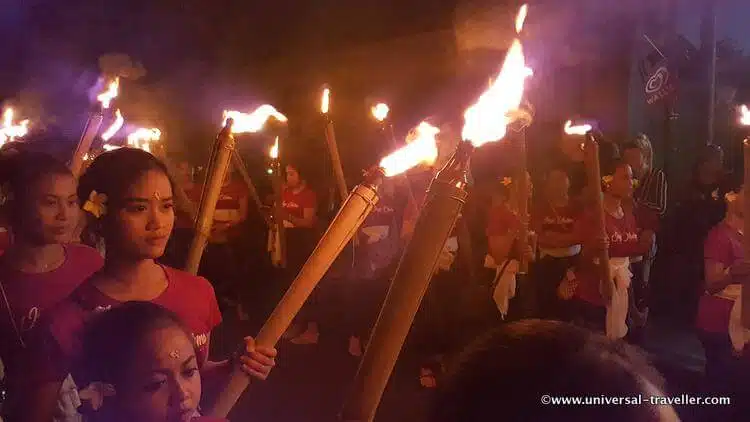
Day Three: Nyepi or The Day of Silence
After an evening filled with song, dance, and celebration, Nyepi takes place.
According to the Balinese calendar, the Balinese “Day of Silence” is celebrated every Isakawarsa (Saka New Year).
This goes along with a myth that after the celebration of the first and second day, the island goes completely dark and quiet to hide from evil spirits.

Nyepi is the most celebrated holiday of the year that is completely dedicated to reconnecting more deeply with God.
People use this day to fast, pray and meditate while focusing on areas of their life such as personal values, love, kindness, and patience.
There are no cars on the road, stores and shops are closed, and no loud noise is allowed. Windows are covered with newspaper and drawn shut to hide out the sun.
People are meant to reflect and meditate during this time.
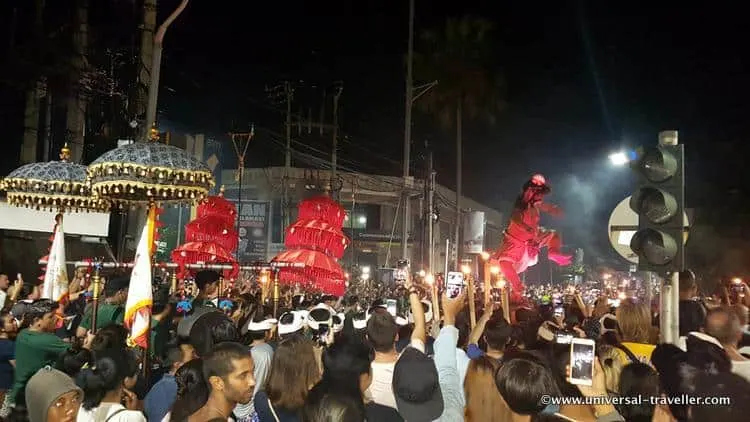
Nyepi is a 24 hours ritual whereby the following beliefs will be upheld:
Amati Geni: No fire or light, including no electricity
Amati Karya: To refrain from any activity
Amati Lelungan: To refrain from travels
Amati Lelanguan: To control oneself/ self-entertainment
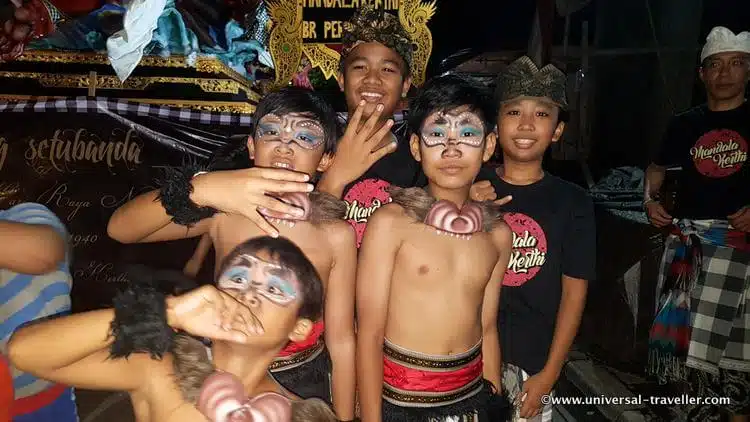
Some believe that It is thought that this is the day to let Mother Nature recover from 364 days of human pollution.
It is said that the day of silence can be one of the most unique days in Bali that one could ever experience.
Everyone in Bali, whether Hindu or not, participate. People who are not Hindu observe this holiday out of respect for their neighbors.
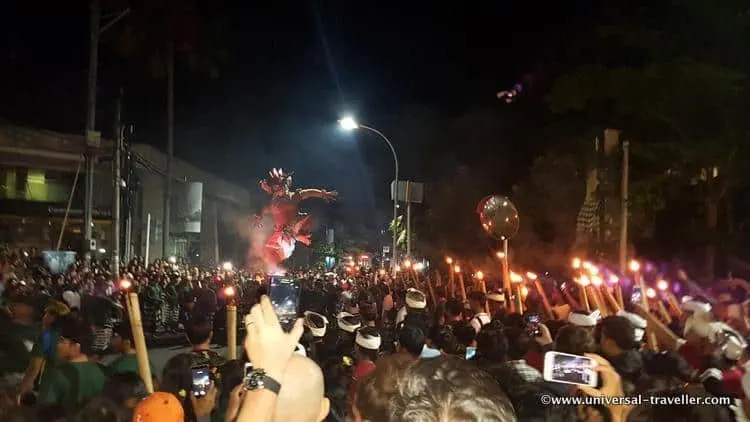
Day Four: Yoga/ Brata
After The Day of Silence, the Yoga/Brata Ritual begins.
This day begins on the day of silence and goes into the next day, where the faithful spend this day in more meditation.
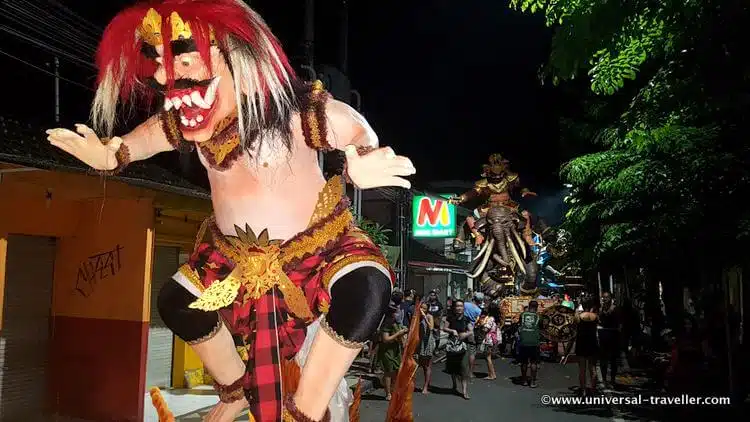
Day Five: Ngembak Agni/ Labuh Brata Ritual
The fifth day is the Ngembak Agni/ Labuh Brata Ritual.
This is the official New Year’s day where the Balinese Hindus take this day to visit with friends, family, and neighbors to exchange forgiveness for one another.
On this day, young people also practice Omed-omedan; or the Kissing Ritual, to welcome in the New Year.
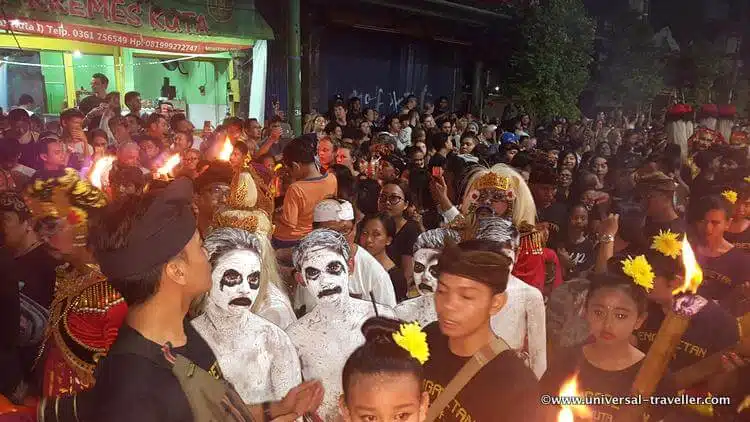
Day Six: Dharma Shanti Ritual
Finally, on the sixth day is the Dharma Shanti Rituals.
On this day, Balinese Hindus recite ancient scriptures, and this marks the closing of the sacred days in the Balinese calendar.
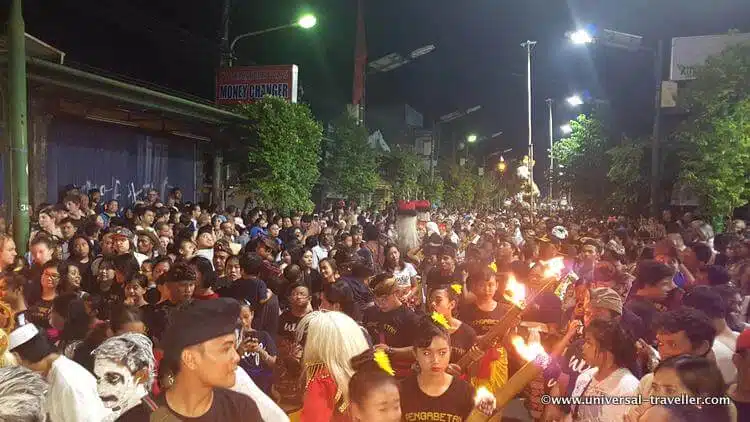
So what can you expect if you are in Bali during The Day of Silence?
So if you are not familiar with the traditions, The Day of Silence can be filled with many questions about what to do and what is expected.
What is the purpose of Nyepi?
Nyepi is a day of self-cleansing and reflection.
Everything is closed, and all people are meant to be inside. There are no cars on the road or anyone walking around.
The airport is shut down with no flights coming in or going out for this day.
(Fun fact: This is the only airport in the world that closes for one day a year.)
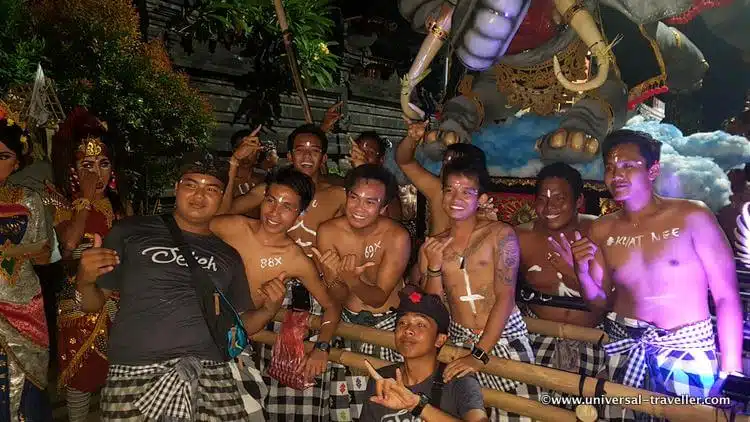
There is not any light allowed to shine through windows.
If an airplane were to fly over Bali on this evening, there would not be any light shining from the island.
To ensure that all Nyepi traditions are being practiced, Pecalang (Nyepi police) patrol the island.
It is advised to visitors to have all of their arrangements settled before this day.
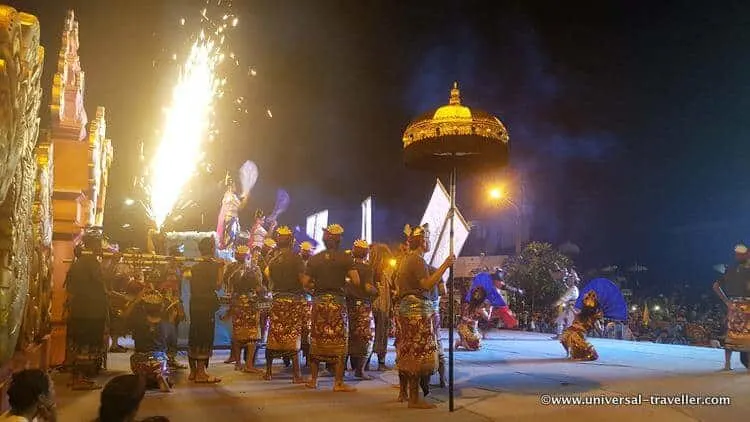
What Are You Not Allowed To Do?
On this day, people are not allowed to do anything outdoors, or that makes noise.
They are not allowed to drive cars, walk the streets, or do any manual work.
Walking outside is considered a criminal act!
There is no shopping as all shops are closed.
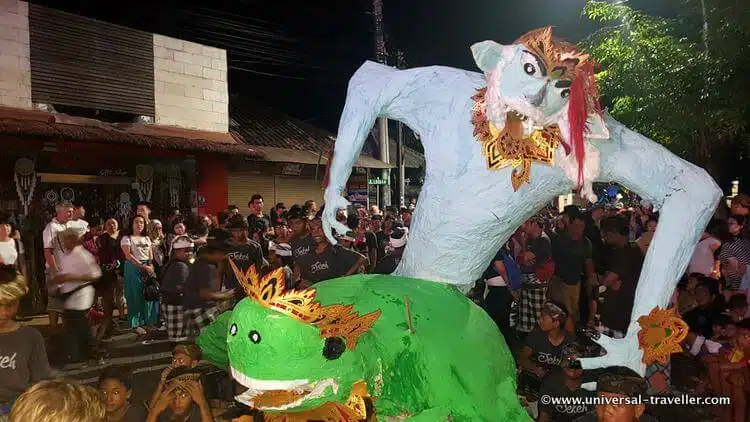
The day is meant specifically to stay home and meditate in the peacefulness of your home and reconnect with God.
People are not allowed to use electricity or, at the very least, only use small amounts with their windows covered so that light cannot get out.
If you are a tourist, hotels often have activities planned at the establishment to help fill your day as even guests are expected to semi adhere to the Nyepi traditions.
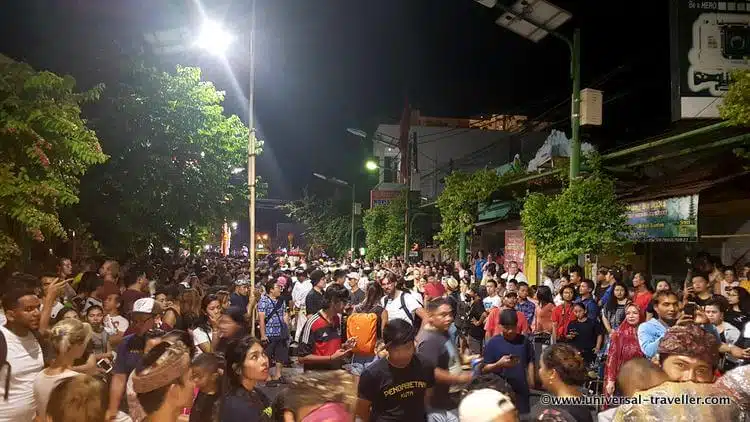
How Do I Prepare for Nyepi?
To prepare for this occasion, you must start ahead of time.
Families will need to have all food, water, and medication at their homes.
If you are ill-prepared, then that day you will have to go without because all storefronts will be closed and nothing will be available.
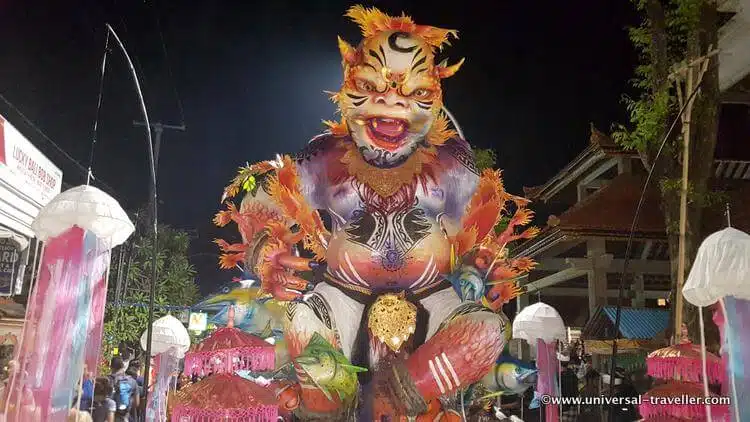
So make sure that you have enough food and drinks to last at least one day.
If you do run low on supplies, the day of silence is only one day long so that you can restock the following day.
Tips If You Are In Bali For Nyepi
Obviously, if you arrive expecting Nyepi, that is best, but if you arrive and it is a complete surprise, that’s okay too.
There are some things you can do.
Most hotels in the area expect their guests to not be sure what to think.
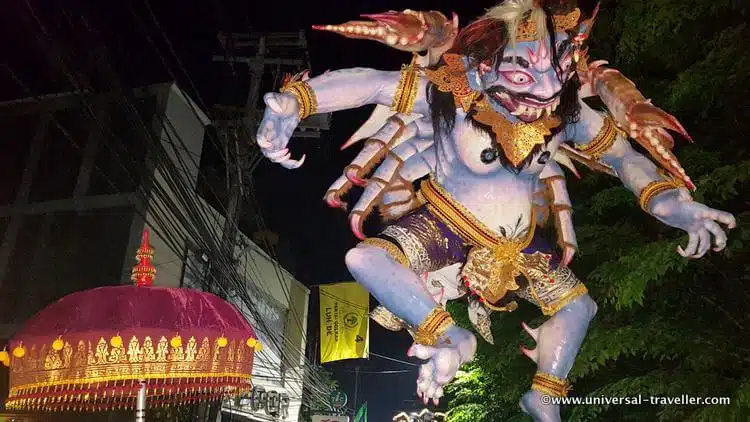
Many hotels on the island are prepared with food for guests. It is usually asked to be ordered ahead of time, so there is time to prepare.
This day is a perfect time to unwind in your hotel room. You can nap, read or meditate.
Movement around the interior of hotels is usually permitted but asked to be kept at a minimum. If staying at a spa, it is the perfect excuse to have a full day spa treatment to help relax and unwind.
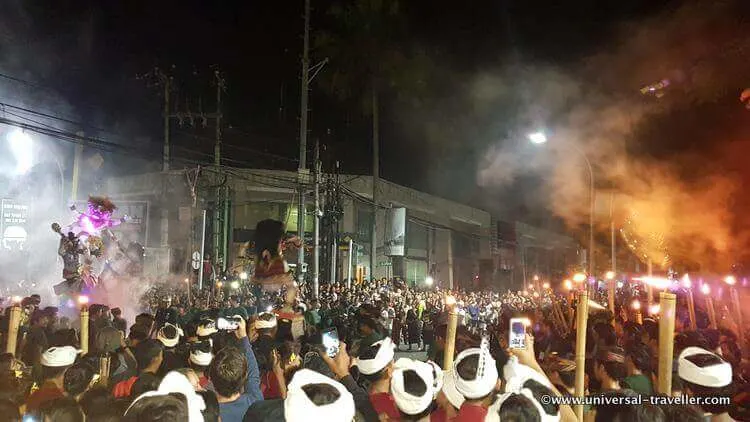
At night, with the whole island being shut off and the lack of any light pollution, you are in for the best nighttime sky view.
This is when the stars can shine their brightest, and you can clearly see the Milky Way. For most of us, this is a very rare and special occasion.
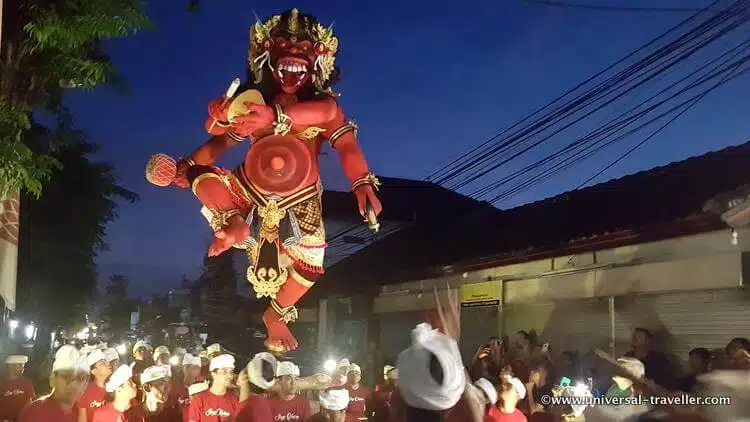
If you are not interested in experiencing Nyepi at all, then it is recommended that you make arrangements to head to an island that does not observe the holiday.
The most well-known local island that you could escape to is the Gili Islands that you can take a boat ride to.
When is Nyepi in Bali?
| Year | Date | Caka Year |
|---|---|---|
| 2018 | Saturday, 17th March | 1940 |
| 2019 | Wednesday, 6th March | 1941 |
| 2020 | Wednesday, 23rd March | 1942 |
| 2021 | Sunday, 14th March | 1943 |
| 2022 | Saturday, 3rd March | 1944 |
| 2023 | Wednesday, 22 March | 1945 |
| 2024 | Monday, 11th March | 1946 |
| 2025 | Saturday, 29th March | 1947 |
| 2026 | Thursday, 19th March | 1948 |
| 2027 | Monday, 08th March | 1949 |
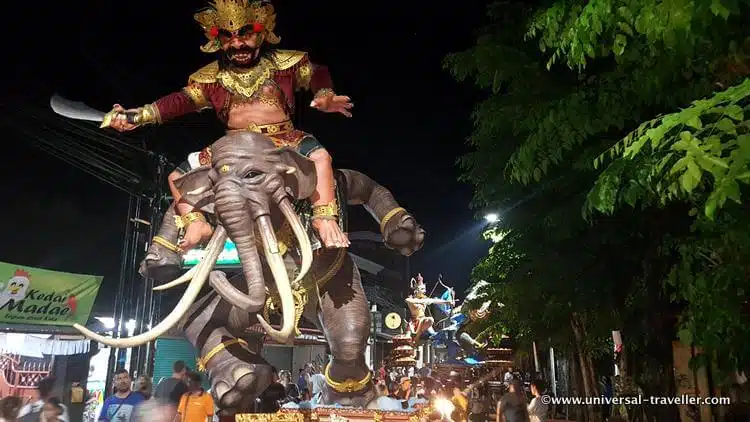
This is a special time of the year for all people who live in this area of the world.
It is truly an eye-opening experience and something that all should experience at least once in their life.
Have you been fortunate enough to partake in the Balinese New Year celebration?
I encourage you to leave a comment below to share your experience!
More Photos of the Ogoh Ogoh Parade
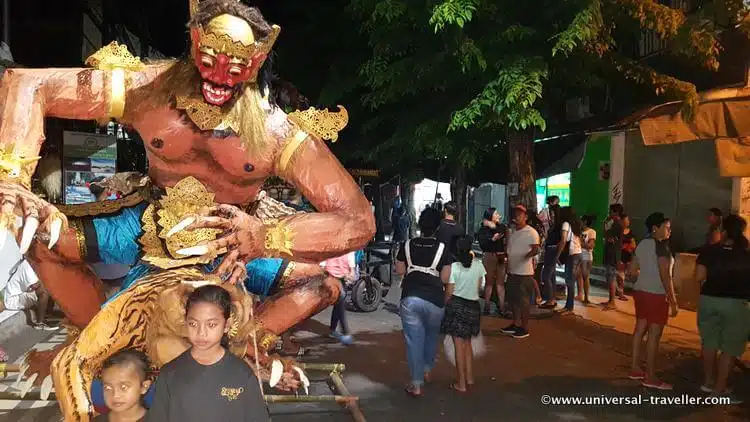
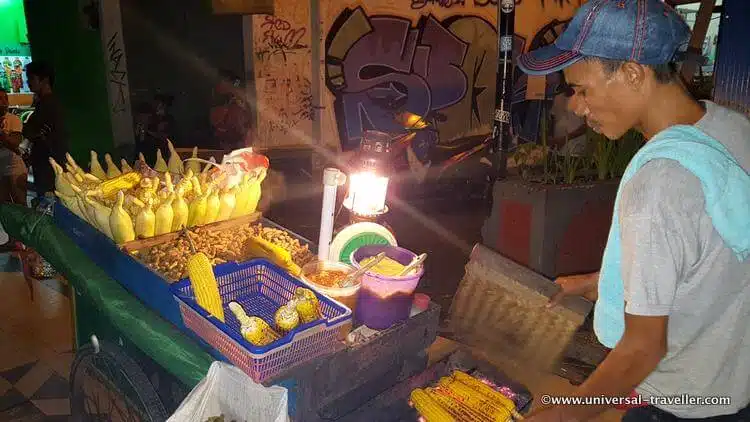
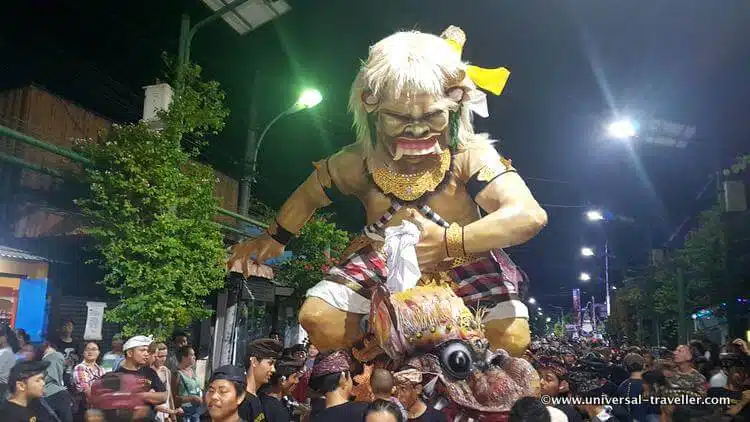
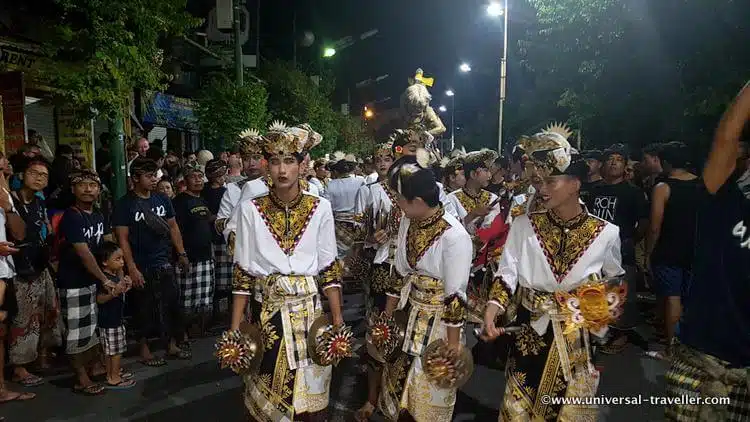
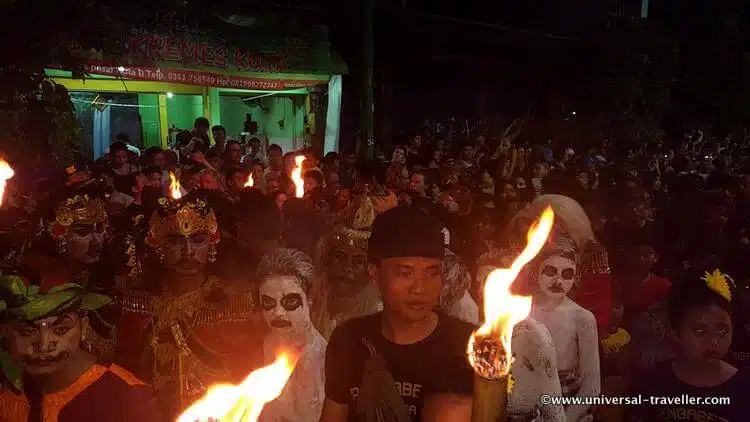
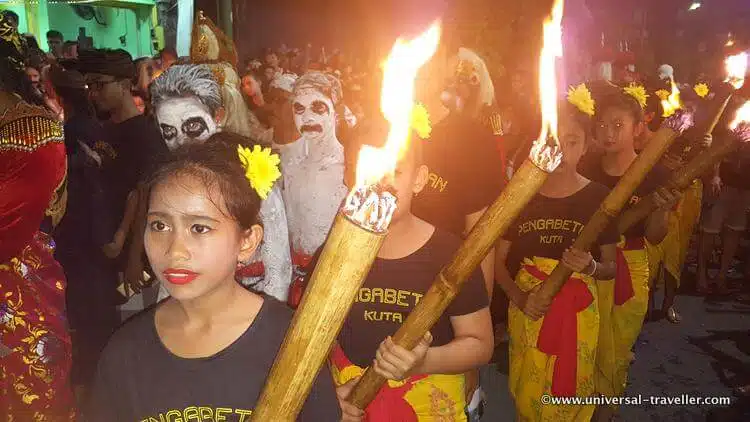
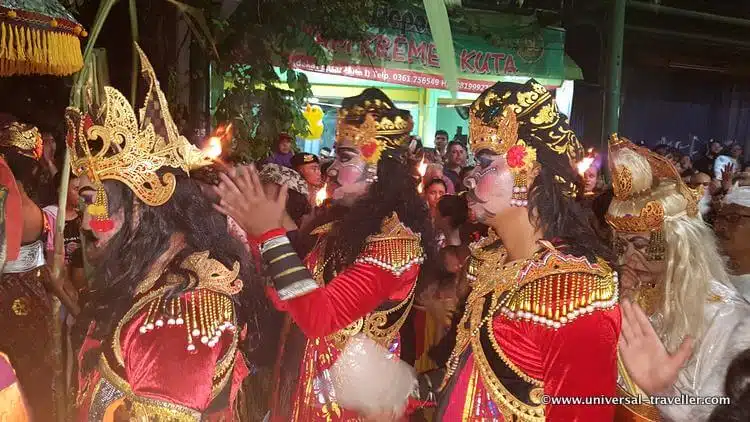







Leave a Reply